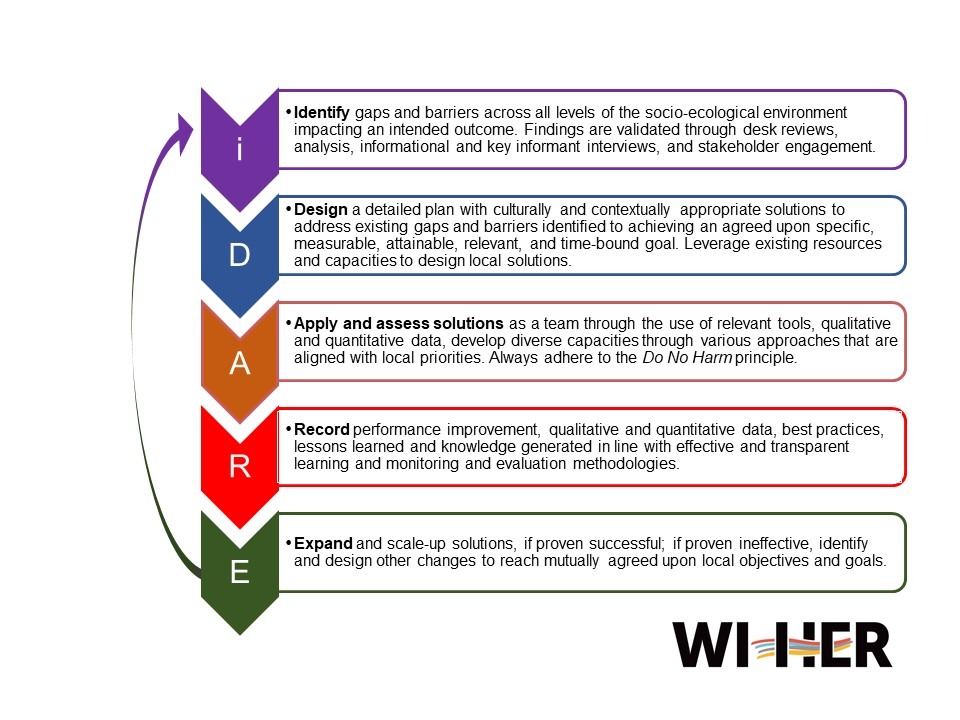iDARE Methodology
Our unique approach to locally led development
 iDARE takes quality improvement to the next level by incorporating behavior change theory, human-centered design, as well as gender, equity, youth and social inclusion into improvement science. iDARE allows the identification and leveraging of the strengths of team members to operate quickly, nimbly, and through a collaborative and continuous learning, adaptation, and improvement approach.
iDARE takes quality improvement to the next level by incorporating behavior change theory, human-centered design, as well as gender, equity, youth and social inclusion into improvement science. iDARE allows the identification and leveraging of the strengths of team members to operate quickly, nimbly, and through a collaborative and continuous learning, adaptation, and improvement approach.